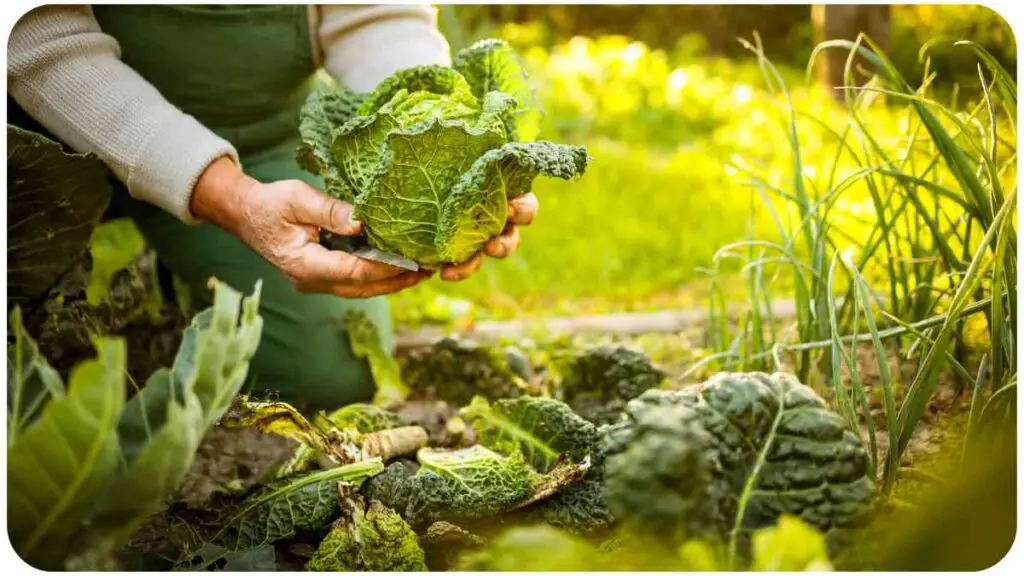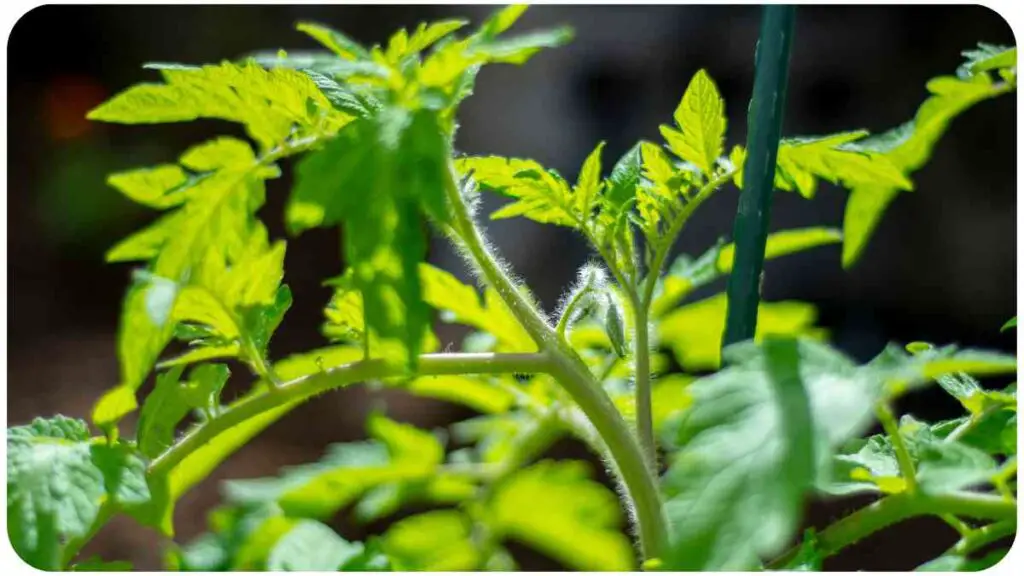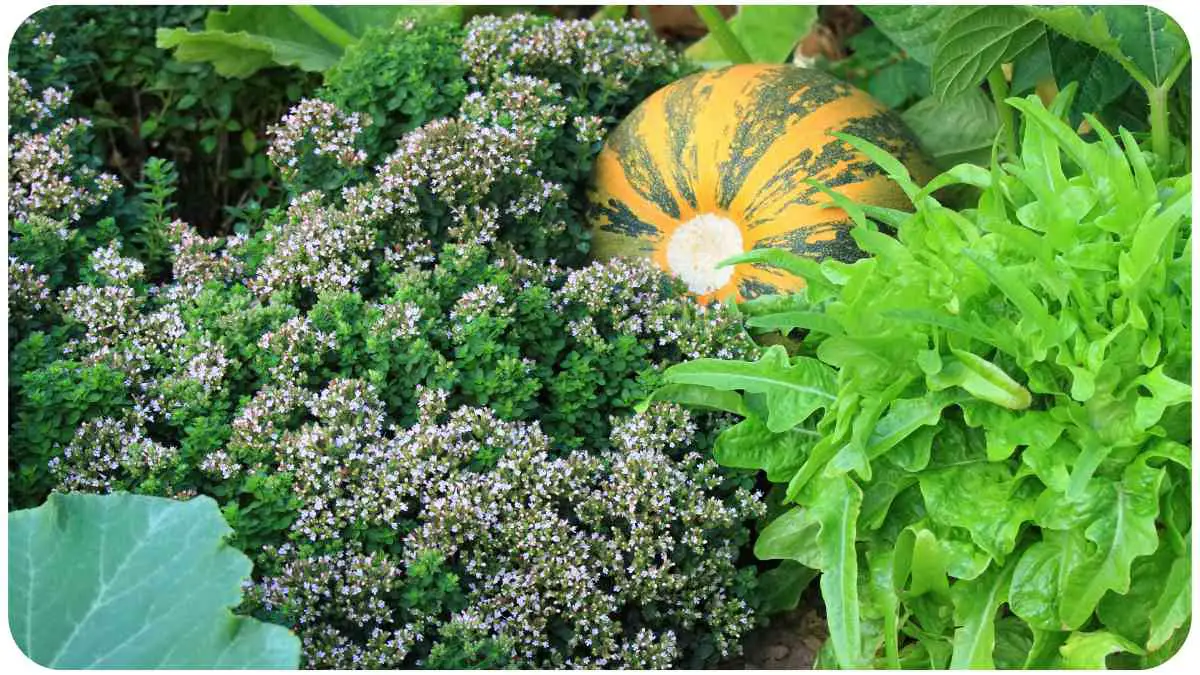Are you tired of the constant upkeep and resource drain of conventional gardening? Are you looking to create a sustainable oasis in your backyard? Welcome to the world of permaculture gardening, where harmony with nature is the guiding principle.
In this guide, we’ll explore how to build your own permaculture paradise, transforming your garden into a self-sustaining utopia that not only provides food but also enhances biodiversity and ecological health.
2. Understanding Permaculture

Permaculture is not just a gardening technique; it’s a holistic approach to sustainable living. It’s about mimicking natural ecosystems to create productive and resilient landscapes. At its core are three ethics: care for the earth, care for people, and fair share. By working with nature rather than against it, permaculture aims to create abundance while minimizing waste and environmental impact.
Organic gardening is a crucial practice for enhancing the health of your soil. By understanding how organic gardening methods improve soil health, you can promote a more fertile and sustainable garden environment that supports a diverse range of plant life.
Table 1: Key Principles of Permaculture
| Principle | Description |
|---|---|
| Observation and Interaction | Study your environment and interact with it thoughtfully to understand its patterns. |
| Catch and Store Energy | Harvest and store energy in various forms, such as sunlight, water, and wind. |
| Obtain a Yield | Design systems that provide multiple benefits and yields. |
| Apply Self-Regulation and Accept Feedback | Continuously monitor and adapt to feedback from the environment. |
| Use and Value Renewable Resources and Services | Utilize renewable resources and services rather than depleting finite ones. |
| Produce No Waste | Design systems that generate no waste or recycle waste into useful resources. |
| Design from Patterns to Details | Observe and replicate natural patterns in your design. |
| Integrate Rather than Segregate | Create mutually beneficial relationships between elements in your system. |
| Use Small and Slow Solutions | Start small and build gradually, observing and adjusting as you go. |
| Use and Value Diversity | Embrace diversity in plants, animals, and microorganisms to enhance resilience. |
| Use Edges and Value the Marginal | Utilize the edge effect to increase productivity and biodiversity. |
| Creatively Use and Respond to Change | Embrace change as an opportunity for innovation and adaptation. |
3. Assessing Your Space
Before you start digging in the dirt, it’s essential to assess your space and understand its unique characteristics. Whether you have a small urban backyard or acres of rural land, every space has potential for permaculture.
Garden Size and Layout
The size and layout of your garden will influence your design choices. Consider factors like sun exposure, slope, and existing structures. Start small if you’re new to gardening, and expand gradually as you gain experience and confidence.
Table 2: Assessing Garden Size and Layout
| Factor | Considerations |
|---|---|
| Sun Exposure | Observe how sunlight moves across your garden throughout the day. |
| Slope | Evaluate the slope of your land and plan for water management. |
| Existing Structures | Note any existing structures like buildings, trees, or fences. |
| Access | Ensure easy access for maintenance and harvesting. |
| Microclimates | Identify microclimates within your garden, such as shady or windy areas. |
4. Designing Your Permaculture Garden

With a clear understanding of your space, it’s time to design your permaculture garden. The design process in permaculture revolves around principles like zoning, sector analysis, and guild planting.
Companion planting is an effective strategy for natural pest management. By learning why companion planting is an effective technique for pest control, gardeners can create harmonious plant relationships that reduce the need for chemical interventions, leading to healthier gardens.
Zones and Sectors
Zoning involves dividing your space into zones based on frequency of use and inputs required. Zone 1, closest to your home, contains high-maintenance crops and frequently visited areas. Zone 5, the wilderness zone, is left mostly untouched.
Table 3: Zoning in Permaculture
| Zone | Description | Examples |
|---|---|---|
| Zone 1 | Intensively managed | Kitchen garden, herbs |
| Zone 2 | Semi-intensive | Orchard, compost bins |
| Zone 3 | Transitional | Annual crops, small livestock |
| Zone 4 | Extensive management | Native habitat, woodlot |
| Zone 5 | Wilderness | Untouched natural areas |
Guild Planting
Guild planting involves grouping plants together based on their complementary relationships. By mimicking natural ecosystems, guilds enhance soil fertility, pest control, and overall productivity.
Table 4: Example Guild Planting
| Plant | Function | Companions |
|---|---|---|
| Fruit Tree | Provides structure and shade | Comfrey, nitrogen-fixing plants |
| Nitrogen-Fixer | Improves soil fertility | Legumes, clover |
| Groundcover | Suppresses weeds, conserves moisture | Creeping thyme, comfrey |
| Insectary Plants | Attracts beneficial insects | Marigolds, yarrow |
Polyculture vs. Monoculture
Permaculture favors polyculture, where multiple species are grown together in harmony. This diversity increases resilience, reduces pest and disease pressure, and maximizes use of resources.
Composting kitchen scraps is an excellent way to recycle waste into valuable garden nutrients. Discover how turning kitchen scraps into garden gold can significantly enhance soil fertility and reduce household waste, making your garden more self-sustaining and eco-friendly.
Table 5: Polyculture vs. Monoculture
| Aspect | Polyculture | Monoculture |
|---|---|---|
| Diversity | High | Low |
| Resilience | High | Low |
| Pest Control | Natural pest control from biodiversity | Vulnerable to pest outbreaks |
| Soil Health | Improved soil structure and fertility | Soil depletion, erosion |
| Resource Use | Efficient use of resources | High resource input |
5. Building Soil Health
Healthy soil is the foundation of any successful garden, and in permaculture, soil building is a top priority. By focusing on enriching the soil, you create an environment where plants thrive naturally, reducing the need for synthetic fertilizers and pesticides.
Composting
Composting is a key practice in permaculture for recycling organic matter and creating nutrient-rich soil amendments. It’s a simple process that transforms kitchen scraps, yard waste, and other organic materials into “black gold” for your garden.
Table 6: Composting Essentials
| Material | Examples | Purpose |
|---|---|---|
| Greens | Fruit and vegetable scraps, grass clippings | Provide nitrogen for decomposition |
| Browns | Leaves, straw, shredded paper | Provide carbon and structure |
| Water | Maintain moisture levels | |
| Air | Turning or aerating compost pile | Promote aerobic decomposition |
Mulching
Mulching is another soil-building technique that conserves moisture, suppresses weeds, and adds organic matter to the soil. Use materials like straw, leaves, or wood chips to cover the soil surface around your plants.
Creating a pollinator-friendly garden is vital for a thriving ecosystem. Learn about creating a pollinator paradise in your backyard to attract beneficial insects, which play a crucial role in plant pollination and overall garden health.
Table 7: Mulching Materials
| Material | Description | Benefits |
|---|---|---|
| Straw | Harvested stalks of grains | Weed suppression, moisture retention |
| Leaves | Fallen leaves from trees | Nutrient cycling, soil insulation |
| Wood Chips | Chipped tree branches | Slow decomposition, weed control |
| Grass Clippings | Clippings from lawn mowing | Nitrogen-rich, quick decomposition |
Vermicomposting
Vermicomposting, or worm composting, is a dynamic way to recycle food scraps into nutrient-rich worm castings. Worms break down organic matter, turning it into a form that plants can readily absorb.
Table 8: Vermicomposting Basics
| Component | Description | Role |
|---|---|---|
| Worm Bin | Container for housing worms and compost | Provides habitat for worms |
| Bedding | Shredded newspaper, cardboard, or coconut coir | Provides bedding material |
| Red Wigglers | Species of worms used in vermicomposting | Responsible for composting process |
| Food Scraps | Fruit and vegetable scraps for worms to eat | Source of organic matter |
6. Water Management
Effective water management is essential in permaculture gardening, especially in regions prone to drought or water scarcity. By harvesting rainwater and recycling greywater, you can reduce reliance on municipal water sources and create a more resilient garden ecosystem.
Rainwater Harvesting
Rainwater harvesting involves collecting and storing rainwater for later use in the garden. This practice not only conserves water but also reduces erosion and flooding, especially in urban areas with impervious surfaces.
Table 9: Rainwater Harvesting Methods
| Method | Description | Benefits |
|---|---|---|
| Rain Barrels | Collect rainwater from roof gutters into barrels | Low-cost, easy to install |
| Rain Gardens | Direct rainwater runoff into landscaped depressions | Natural filtration, habitat creation |
| Swales | Ditches or trenches that capture and slow runoff | Water infiltration, erosion control |
Greywater Recycling
Greywater is wastewater from household activities like dishwashing, laundry, and bathing that can be safely reused in the garden. With proper treatment, greywater can provide a valuable source of irrigation for your plants.
Understanding the soil microbiome is essential for maintaining a healthy garden. By exploring the microbiome for a healthier garden, gardeners can better appreciate the complex interactions within their soil, leading to more robust and resilient plant growth.
Table 10: Greywater Recycling Systems
| System | Description | Benefits |
|---|---|---|
| Branched Drain Greywater System | Diverts greywater from fixtures to mulch basins | Nutrient recycling, soil enrichment |
| Laundry-to-Landscape System | Diverts greywater from washing machine to outdoor landscape | Simple DIY installation, reduces water usage |
| Greywater Treatment Systems | Filters and treats greywater for reuse in the garden | Ensures water quality and safety |
7. Choosing the Right Plants

Selecting the right plants is crucial in permaculture gardening. By choosing native and adaptive species, practicing companion planting, and implementing succession planting, you can maximize productivity and create a resilient ecosystem.
Native and Adaptive Species
Native plants are species that naturally occur in a specific region and have evolved to thrive in local environmental conditions. By incorporating native plants into your garden, you support local biodiversity and reduce the need for supplemental watering and fertilization.
Table 11: Examples of Native Plants
| Region | Native Plants | Benefits |
|---|---|---|
| Pacific Northwest | Douglas Fir, Oregon Grape, Salal | Drought-tolerant, wildlife habitat |
| Southwest Desert | Agave, Mesquite, Desert Marigold | Heat and drought-tolerant, low maintenance |
| Midwest | Purple Coneflower, Big Bluestem, Pawpaw | Pollinator-friendly, erosion control |
| Southeast | Southern Magnolia, Cabbage Palmetto, Tupelo | Adapted to local climate and soil conditions |
Companion Planting
Companion planting involves growing different plant species together to benefit each other in various ways. Some plants repel pests, while others attract beneficial insects or improve soil fertility.
Table 12: Companion Planting Combinations
| Plant | Companion Plants | Benefits |
|---|---|---|
| Tomato | Basil, Marigold, Borage | Pest repellent, flavor enhancement |
| Cucumber | Nasturtium, Radish, Dill | Pest control, improved pollination |
| Bean | Corn, Squash, Sunflower | Nitrogen fixation, structural support |
| Lettuce | Carrot, Onion, Strawberry | Pest deterrence, space utilization |
Succession Planting
Succession planting involves planting crops in succession to maximize the use of space and extend the growing season. As one crop is harvested, another is planted in its place, ensuring a continuous supply of fresh produce.
Table 13: Succession Planting Guide
| Season | Early Spring | Late Spring | Summer | Fall |
|---|---|---|---|---|
| Cool-Season | Lettuce, Spinach, Peas | Carrots, Beets, Radishes | Beans, Cucumbers | Kale, Swiss Chard, Turnips |
| Warm-Season | Potatoes, Onions, Broccoli | Tomatoes, Peppers, Eggplant | Squash, Melons | Brassicas, Root Vegetables |
| Cover Crops | Oats, Field Peas | Buckwheat, Sunflowers | Cowpeas, Sorghum | Winter Rye, Hairy Vetch |
8. Integrating Animals
Animals play a vital role in permaculture systems, contributing to soil fertility, pest control, and overall ecosystem health. By integrating animals like chickens, bees, and ducks into your garden, you can create a balanced and productive ecosystem.
Chickens
Chickens are perhaps the most versatile animals in a permaculture garden. They provide eggs, meat, and fertilizer while also helping with pest control and soil aeration through scratching and pecking.
Table 14: Benefits of Keeping Chickens
| Benefit | Description |
|---|---|
| Egg Production | Fresh eggs daily for personal consumption |
| Pest Control | Eating insects, grubs, and weed seeds |
| Fertilizer | Producing high-quality compost with their manure |
| Soil Aeration | Scratching and pecking improves soil structure |
| Entertainment | Endless entertainment with their quirky behavior |
Bees
Bees are essential pollinators in the garden, ensuring the reproduction of many fruit and vegetable crops. By keeping bees, you not only support your garden but also contribute to the health of the broader ecosystem.
Table 15: Importance of Bees in the Garden
| Role | Description |
|---|---|
| Pollination | Essential for fruit and vegetable production |
| Biodiversity | Supports a diverse array of plants and insects |
| Honey Production | Harvesting honey for personal use or sale |
| Wax Production | Beeswax can be used for candles and skincare |
| Educational Opportunities | Learning about bee behavior and biology |
Ducks
Ducks are valuable additions to a permaculture garden, especially in wetland or water-rich environments. They eat pests like slugs and snails, provide fertilizer, and can even help with weed control in certain situations.
Table 16: Benefits of Ducks in the Garden
| Benefit | Description |
|---|---|
| Pest Control | Eating slugs, snails, and insect larvae |
| Fertilizer | Producing nutrient-rich manure |
| Weed Control | Grazing on certain types of weeds |
| Egg Production | Providing eggs for consumption or hatching |
| Soil Aeration | Stirring up and aerating soil with their bills |
9. Maintaining Your Permaculture Paradise
Once your permaculture garden is established, maintenance becomes an ongoing process to ensure its continued health and productivity. By implementing effective pest and weed management strategies, practicing crop rotation, and performing seasonal maintenance tasks, you can keep your garden thriving year after year.
Pest and Weed Management
In permaculture gardening, prevention is key when it comes to pest and weed management. By creating diverse ecosystems and healthy soil, you can minimize pest and weed pressure naturally. However, when issues arise, there are several organic methods you can employ.
Table 17: Organic Pest and Weed Management Techniques
| Technique | Description |
|---|---|
| Companion Planting | Planting insect-repellent herbs and flowers alongside crops |
| Beneficial Insects | Attracting or introducing predators and parasites to control pests |
| Mulching | Suppressing weed growth and conserving moisture |
| Handpicking | Removing pests and weeds by hand |
| Neem Oil | Spraying neem oil as a natural insecticide and fungicide |
Crop Rotation
Crop rotation is a traditional farming practice that involves rotating crops in a specific sequence to prevent soil depletion, manage pests and diseases, and improve overall soil health. By rotating crops, you can break pest and disease cycles and maintain a balanced nutrient profile in the soil.
Table 18: Example Crop Rotation Plan
| Year | Spring | Summer | Fall | Winter |
|---|---|---|---|---|
| Year 1 | Tomatoes | Beans | Lettuce | Cover Crop |
| Year 2 | Corn | Squash | Carrots | Cover Crop |
| Year 3 | Peas | Cucumbers | Kale | Cover Crop |
| Year 4 | Potatoes | Broccoli | Onions | Cover Crop |
Seasonal Maintenance
Seasonal maintenance tasks ensure that your permaculture garden remains healthy and productive throughout the year. From pruning fruit trees to harvesting ripe produce, staying on top of seasonal chores is essential for garden success.
Table 19: Seasonal Maintenance Checklist
| Season | Tasks |
|---|---|
| Spring | Pruning fruit trees, planting new crops |
| Summer | Watering, mulching, harvesting vegetables |
| Fall | Harvesting, preserving crops, planting cover crops |
| Winter | Pruning dormant trees, planning for the next season |
10. Permaculture in Action: Case Studies
To truly understand the potential of permaculture gardening, let’s explore some real-life examples of successful permaculture projects. These case studies highlight the diverse applications of permaculture principles and demonstrate how they can be adapted to different climates, landscapes, and lifestyles.
Case Study 1: The Food Forest at Beacon Hill Park, Seattle
Located in the heart of Seattle, Beacon Hill Park is home to a thriving food forest—a public orchard where visitors can pick fresh fruits and nuts for free. This project transformed an underutilized urban space into a lush oasis of biodiversity and community engagement. By incorporating permaculture principles like polyculture planting, mulching, and rainwater harvesting, the food forest provides an abundant and accessible source of fresh, nutritious food for local residents.
Table 20: Key Features of the Beacon Hill Food Forest
| Feature | Description |
|---|---|
| Polyculture Planting | Diverse mix of fruit trees, shrubs, and groundcover |
| Community Engagement | Volunteer-led work parties for planting and maintenance |
| Educational Signage | Interpretive signs explaining permaculture principles |
| Public Access | Open to the public for harvesting and enjoyment |
Case Study 2: Zaytuna Farm, New South Wales, Australia
Zaytuna Farm is a permaculture demonstration site and educational center situated in the subtropical climate of northern New South Wales, Australia. Founded by permaculture pioneers Geoff Lawton and Nadia Lawton, the farm showcases a holistic approach to sustainable living, integrating food production, water management, and natural building techniques. Through careful design and management, Zaytuna Farm has transformed degraded land into a productive and resilient landscape, serving as a model for regenerative agriculture practices worldwide.
Table 21: Key Elements of Zaytuna Farm
| Element | Description |
|---|---|
| Keyline Design | Utilizing natural contours for water retention and distribution |
| Swales and Ponds | Capturing and storing rainwater for irrigation and aquaculture |
| Perennial Polycultures | Planting diverse food forests and perennial gardens |
| Natural Building | Constructing sustainable structures using local materials |
Case Study 3: Polyface Farm, Virginia, USA
Polyface Farm, located in the Shenandoah Valley of Virginia, is a renowned example of regenerative agriculture and holistic land management. Founded by farmer Joel Salatin, Polyface Farm practices a rotational grazing system for livestock, where chickens follow cattle to improve soil fertility and pest control. By mimicking natural patterns and leveraging the synergies between plants and animals, Polyface Farm produces a wide range of high-quality meats, eggs, and vegetables while enhancing ecosystem health and resilience.
Table 22: Sustainable Practices at Polyface Farm
| Practice | Description |
|---|---|
| Pastured Poultry | Portable chicken coops moved daily to fresh pasture |
| Mob Grazing | Rotational grazing of cattle to mimic natural herds |
| Compost Production | Turning animal waste into nutrient-rich compost |
| Direct Marketing | Selling products directly to consumers through on-farm sales |
11. Conclusion
Permaculture gardening offers a holistic approach to creating sustainable and productive landscapes that are in harmony with nature. By applying principles like observation, diversity, and integration, you can transform your garden into a thriving ecosystem that provides food, habitat, and beauty.
In this guide, we’ve explored the key elements of permaculture gardening, from designing your space and building soil health to integrating animals and managing pests. We’ve also delved into real-life examples of successful permaculture projects, showcasing the versatility and scalability of this approach.
As you embark on your permaculture journey, remember that it’s a process of continuous learning and adaptation. Experiment with different techniques, observe how your garden responds, and don’t be afraid to make adjustments along the way. With patience, perseverance, and a deep respect for the natural world, you can create a permaculture paradise that nourishes both body and soul for years to come.
Further Reading
- Workaway – Permaculture Hosts: Explore opportunities to volunteer on permaculture farms and learn hands-on skills from experienced hosts.
- How to Build a Permaculture Homestead Step by Step: This comprehensive guide offers practical advice and insights for creating a permaculture homestead from scratch.
- Successful Permaculture Farms: Learn from the experiences of successful permaculture farmers and gain inspiration for your own projects.
FAQs
What is permaculture?
Permaculture is a holistic design approach that mimics natural ecosystems to create sustainable and productive landscapes.
How can I get started with permaculture?
Begin by researching permaculture principles and observing your environment to understand its patterns and potential.
What are the benefits of permaculture gardening?
Permaculture gardening promotes biodiversity, conserves resources, and produces healthy, organic food.
Do I need a lot of space for permaculture gardening?
Permaculture principles can be applied to spaces of all sizes, from urban balconies to rural homesteads.
Can I incorporate animals into my permaculture garden?
Yes, integrating animals like chickens, bees, and ducks can enhance soil fertility and pest control in a permaculture garden.

For 15 years, Hellen James has worked in the gardening industry as an expert and landscape designer. During her career, she has worked for a variety of businesses that specialize in landscaping and gardening from small firms to large corporations.

